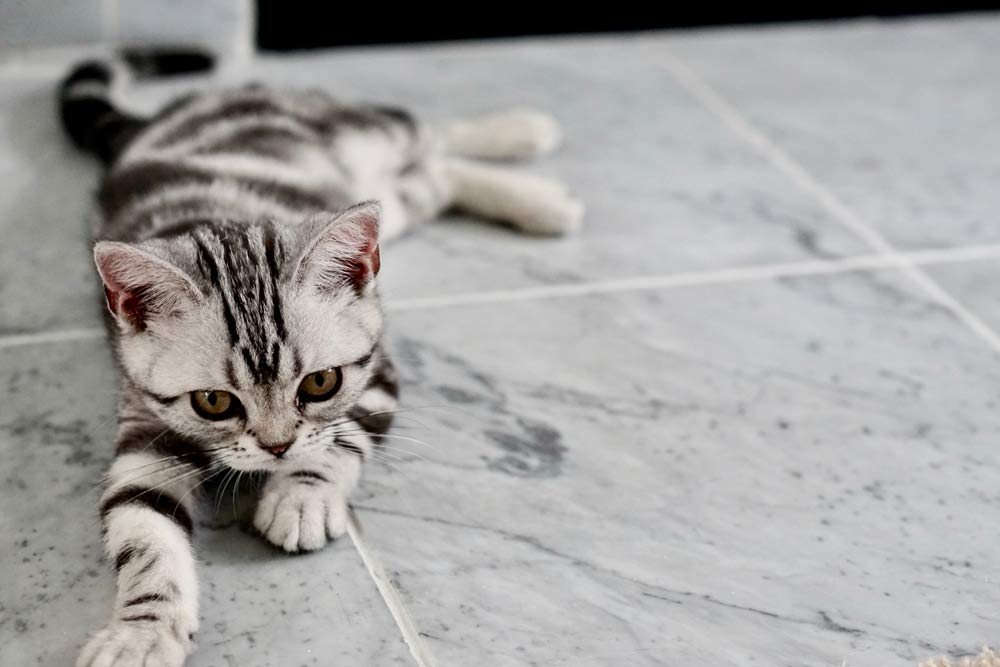What are some easy tricks to teach your cat? In recent years, there has been a noticeable shift in the world of pet training, with cat owners increasingly embracing the art of trick training for their feline companions. While traditionally associated with dogs, the practice of teaching tricks is gaining popularity among cat enthusiasts, who are discovering the joy of watching their agile pets perform impressive feats. Cats, known for their independent nature and grace, are proving to be just as capable, if not more so, than their canine counterparts when it comes to mastering tricks.
The Versatility of Feline Agility
One of the aspects that sets cat trick training apart is the remarkable agility displayed by these animals. Unlike dogs, who may struggle with certain movements or commands due to their size or physical limitations, cats excel in activities that require jumping, balancing, and quick reflexes. Picture the scene: a sleek tabby effortlessly leaping onto its owner’s shoulder or gracefully bounding into a backpack with ease. It’s a display of athleticism and coordination that often leaves onlookers in awe.
Expanding the Boundaries of Trick Training
As more cat owners delve into the world of trick training, they’re discovering the untapped potential of their feline companions. What was once thought to be solely the domain of dogs is now being explored and expanded upon by cat enthusiasts eager to showcase their pets’ intelligence and agility. From simple tricks like sitting and high-fiving to more complex maneuvers such as jumping through hoops or walking on a leash, cats are proving to be highly trainable animals capable of mastering a wide range of behaviors.
Overcoming Stereotypes and Misconceptions
For many years, cats have been unfairly stereotyped as aloof and untrainable creatures, overshadowed by the more obedient and eager-to-please nature of dogs. However, as more owners take on the challenge of trick training their cats, these stereotypes are being shattered. It’s becoming increasingly clear that with patience, consistency, and positive reinforcement, cats can learn to perform just as impressively as their canine counterparts, if not more so in certain areas.
Building Stronger Bonds Through Training
Beyond the spectacle of watching a cat perform tricks, there’s a deeper significance to the practice of trick training for both the owner and the animal. Training sessions provide valuable opportunities for bonding, communication, and mental stimulation for cats, strengthening the relationship between pet and owner. Through positive reinforcement and the mutual trust developed during training sessions, cats learn to rely on their owners for guidance and support, fostering a deeper connection and understanding between the two.
Identifying Natural Behaviors
When embarking on the journey of training your cat, it’s natural to ponder which tricks would be the easiest for them to learn. One effective approach is to closely observe your feline companion and take note of the behaviors they naturally exhibit.
Observing Your Cat’s Habits
Take some time to watch your cat closely in their everyday activities. Notice if they display any particular skills or behaviors with ease. Are they adept at jumping onto high surfaces? Do they frequently use their paws to bat at objects or manipulate toys? Perhaps they enjoy standing on their hind legs to reach for treats, or they effortlessly roll over during playtime. By carefully observing these tendencies, you can identify their inherent talents and use them as a foundation for training.
Leveraging Natural Talents
Once you’ve identified your cat’s natural behaviors, you can leverage them to teach new tricks. For example, if your cat is proficient at jumping, you can incorporate this skill into a trick such as leaping through a hoop or onto a designated platform. If they enjoy using their paws, you can teach them to high-five or even play rudimentary games of fetch. By building upon what comes naturally to your cat, you can make the training process more enjoyable and rewarding for both of you.
Introducing Training Tools
To aid in your cat training endeavors, you’ll need a few essential tools. One such tool is a clicker, a small device that emits a distinct clicking sound when pressed. The clicker serves as a marker to signal to your cat that they have performed the desired behavior correctly. Additionally, you’ll want to have a supply of treats on hand that your cat finds irresistible. These treats will serve as positive reinforcement, motivating your cat to continue learning and performing new tricks.
Easy Tricks To Teach Your Cat: Feline Training for Beginners
Before delving into the tricks, it’s crucial to understand your feline friend’s nature. Cats are independent creatures with unique personalities. They’re also highly intelligent and curious beings who thrive on mental stimulation. By recognizing and respecting these traits, you’ll be better equipped to teach them new tricks.
Trick 1: Clicker Training for Cats
Introduction: Clicker training is an effective and positive method for teaching cats new behaviors and tricks by associating the sound of a clicker with a reward.
Method:
- Introduction to the Clicker: Begin by introducing your cat to the sound of the clicker, clicking it and immediately offering a tasty treat.
- Behavior Association: When your cat performs a desired action, such as sitting or touching a target, promptly click the clicker and reward them with a treat.
- Consistency and Patience: Repeat the process consistently, ensuring that the click is always followed by a reward. Be patient and allow your cat time to understand the association between the clicker and positive reinforcement.
- Expanding Behaviors: As your cat becomes familiar with clicker training, gradually introduce new behaviors and tricks, clicking and rewarding each successful attempt.
Result: With consistent practice and positive reinforcement, your cat will learn to associate the clicker with desired behaviors, making it easier to teach them a wide range of tricks and commands.
Trick 2: Target Training
Introduction: Target training involves teaching your cat to touch a specific object, such as a stick or your hand, with their nose or paw, providing a foundation for more complex behaviors.
Method:
- Introducing the Target Object: Present the target object to your cat and reward them for any interaction with it, such as sniffing or touching.
- Shaping Behavior: Gradually shape your cat’s behavior by only rewarding them when they touch the target with intent, using verbal praise and treats to reinforce the desired action.
- Repetition and Consistency: Practice target training regularly, gradually increasing the distance or difficulty of the target object to challenge your cat and reinforce the behavior.
- Versatility: Once your cat has mastered target training, you can use this skill to teach a variety of tricks and behaviors, such as jumping through hoops or ringing a bell.
Result: Through target training, your cat will develop focus, coordination, and the ability to follow commands, laying the groundwork for more advanced tricks and behaviors in the future.
Trick 3: Leash Training
Introduction: Contrary to popular belief, cats can be trained to walk on a leash, providing them with safe outdoor exploration and exercise opportunities.
Method:
- Harness Introduction: Introduce your cat to the harness gradually, allowing them to sniff and explore it at their own pace. Offer treats and praise to create positive associations with the harness.
- Indoor Practice: Once your cat is comfortable wearing the harness, attach the leash and let them roam indoors while supervised. Encourage them to walk beside you using treats and gentle guidance.
- Outdoor Exploration: When your cat is ready, venture outdoors to a quiet and secure area. Allow them to explore while keeping the leash loose, using treats and praise to encourage positive behavior.
- Patience and Persistence: Leash training may take time and patience, so be consistent and patient with your cat. Gradually increase the duration and distance of walks as your cat becomes more confident.
Result: With patience and positive reinforcement, your cat can learn to walk on a leash, providing them with mental stimulation and physical exercise while safely exploring the outdoors.
Trick 4: High-Five
Introduction: Teaching your cat to give a high-five is not only adorable but also mentally stimulating, providing enrichment and bonding opportunities.
Method:
- Treat Positioning: Hold a treat in your hand just above your cat’s paw, enticing them to reach for it.
- High-Five Motion: As your cat reaches for the treat, gently lift their paw with your finger, mimicking a high-five motion.
- Immediate Reward: When your cat’s paw makes contact with your hand, immediately reward them with the treat and praise.
- Repetition and Reinforcement: Repeat this process consistently, gradually phasing out the need for the treat as your cat learns the high-five command.
Result: Through positive reinforcement and repetition, your cat will learn to associate the high-five motion with rewards, delighting friends and family with their adorable trick.
Trick 5: Fetch
Introduction: While fetch is commonly associated with dogs, many cats can also learn this fun and interactive game with the right encouragement.
Method:
- Choose the Right Toy: Select a toy that your cat enjoys and is easy for them to carry in their mouth.
- Encouragement: Use treats or your cat’s favorite food to motivate them to chase after the toy.
- Reward: When your cat retrieves the toy and brings it back to you, offer praise and a tasty treat as a reward.
- Repetition: Practice the fetch game regularly, gradually increasing the distance and complexity of the fetch.
Result: With patience and positive reinforcement, your cat may surprise you by mastering the art of fetch, providing hours of entertainment for both of you.
Trick 6: Spin
Introduction: Teaching your cat to spin in a circle adds a playful and engaging element to their repertoire of tricks.
Method:
- Luring with Treats: Hold a treat in front of your cat’s nose and slowly guide them in a circular motion.
- Cue Word: As your cat follows the treat and completes the rotation, say a cue word like “spin” to associate the action with the command.
- Reward: Immediately reward your cat with praise and another treat for successfully spinning.
- Practice: Repeat the spinning exercise regularly, gradually phasing out the treat lure as your cat becomes more adept at responding to the verbal cue.
Result: With consistent training and positive reinforcement, your cat will learn to spin on command, showcasing their agility and impressing everyone with their newfound skill.

Trick 7: Jump Through a Hoop
Introduction: Jumping through a hoop is an entertaining and stimulating trick that showcases your cat’s agility and intelligence.
Method:
- Hoop Placement: Start by placing a hoop on the ground and enticing your cat to walk through it using treats or their favorite toy.
- Gradual Elevation: As your cat becomes comfortable walking through the hoop on the ground, gradually raise it off the ground, encouraging them to jump through it.
- Positive Reinforcement: Use positive reinforcement such as treats, praise, or playtime to reward your cat’s progress and encourage them to continue trying.
- Celebration of Success: Celebrate your cat’s success when they master jumping through the hoop, reinforcing the behavior and making the experience enjoyable for them.
Result: With patience and encouragement, your cat can learn to jump through a hoop, delighting you and your guests with their impressive athleticism and intelligence.
Trick 8: Open Doors
Introduction: Teaching your cat to open doors can be a useful and entertaining trick that showcases their problem-solving abilities. How AI, ChatGPT maximizes earnings of many people in minutes
Method:
- Door Handle Interaction: Attach a string or ribbon to the door handle and encourage your cat to bat at it with their paw using treats or play.
- Gradual Progression: Reward any interaction with the string, gradually shaping their behavior to include pulling on the door handle to open the door.
- Patience and Persistence: Be patient and consistent in your training efforts, providing positive reinforcement and encouragement as your cat learns the desired behavior.
- Safety Considerations: Ensure that the doors your cat learns to open are safe for them to access and that there are no potential hazards on the other side.
Result: With time and practice, your cat may become proficient at opening doors, adding a unique and entertaining skill to their repertoire.
Trick 9: Play Dead
Introduction: Teaching your cat to play dead is a delightful and entertaining trick that adds a playful element to their repertoire. Motivation – Mind – Success – Thinking – Productivity – Happiness
Method:
- Luring into Position: Start by luring your cat into a lying-down position using a treat or their favorite toy.
- Cue Word: Introduce a cue word such as “bang” or “play dead” as your cat lies still.
- Positive Reinforcement: Immediately reward your cat with a treat and plenty of praise when they hold the lying-down position.
- Consistent Practice: Repeat the training sessions regularly, gradually extending the duration of time your cat remains in the “play dead” position.
- Patience and Persistence: Be patient and consistent in your training efforts, providing encouragement and reinforcement as your cat learns the trick.
Result: With consistent practice and positive reinforcement, your cat will learn to associate the cue word with the behavior of playing dead, delighting you and your guests with their playful antics.
Trick 10: Toilet Training
Introduction: Toilet training your cat can be a convenient and hygienic alternative to traditional litter boxes. Business – Money Making – Marketing – E-commerce
Method:
- Transitioning Process: Gradually transition your cat from their litter box to a specially designed toilet training system, such as a cat toilet training kit.
- Positive Reinforcement: Reward your cat with treats and praise each time they successfully use the toilet.
- Gradual Adjustment: Be patient and allow your cat time to adjust to the new training system, gradually removing the litter box once they are comfortable using the toilet.
- Consistency: Maintain a consistent schedule for bathroom breaks and encourage your cat to use the toilet regularly.
- Monitoring Progress: Monitor your cat’s progress closely and provide additional support or adjustments to the training process as needed.
Result: With patience and perseverance, your cat can become proficient at using the toilet, eliminating the need for messy litter boxes and impressing your friends and family with their cleverness.
Trick 11: Ring a Bell
Introduction: Teaching your cat to ring a bell is a practical and interactive trick that allows them to communicate their needs effectively. Health books, guides, exercises, habits, Diets, and more
Method:
- Bell Introduction: Attach a bell to a string and hang it within your cat’s reach.
- Encouragement: Encourage your cat to bat at the bell with their paw by gently tapping it or moving it enticingly.
- Reward Interaction: Reward any interaction with the bell, whether intentional or accidental, with treats and praise.
- Shaping Behavior: Gradually shape your cat’s behavior to include intentionally ringing the bell by withholding treats until they make deliberate contact with it.
- Associate with Request: Once your cat has mastered ringing the bell, associate it with a specific request, such as mealtime or going outside, by providing the desired outcome immediately after they ring the bell.
Result: With consistent practice and positive reinforcement, your cat will learn to use the bell as a means of communication, making it easier for them to express their needs and desires.
Trick 12: Shake Hands
Introduction: Shaking hands is a classic and endearing trick that showcases your cat’s social skills and intelligence. Fitness – Meditation – Diet – Weight Loss – Healthy Living – Yoga
Method:
- Hand Presentation: Present your hand to your cat at their eye level, offering your palm for them to touch.
- Encouragement: Encourage your cat to touch your hand with their paw by gently tapping it or offering a treat.
- Reward Touch: Immediately reward any paw-to-hand contact with treats and praise, reinforcing the desired behavior.
- Verbal Cue: Introduce a verbal cue such as “shake” or “paw” as your cat touches your hand, associating the action with the command.
- Consistent Practice: Practice the trick regularly, gradually reducing the need for treats and reinforcing the behavior with verbal praise alone.
Result: With patience and persistence, your cat will learn to shake hands on command, delighting you and your guests with their social grace and cleverness.
Trick 13: Speak
Introduction: Teaching your cat to speak on command is an entertaining trick that engages their vocal abilities and strengthens your bond through communication. RPM 3.0 – 60% CONVERSION & Money for Affiliate Marketing
Method:
- Observation: Pay attention to moments when your cat naturally vocalizes, such as meowing or chirping, during play or mealtime.
- Immediate Reward: Immediately after your cat vocalizes, offer a treat and verbal praise to reinforce the behavior positively.
- Verbal Cue: Introduce a verbal cue like “speak” or “talk” each time your cat vocalizes naturally, associating the cue with the action.
- Encouragement: Encourage your cat to vocalize by using the verbal cue consistently and rewarding them with treats and praise when they comply.
- Repetition and Reinforcement: Practice the trick regularly, gradually requiring your cat to vocalize in response to the verbal cue alone before receiving a reward.
- Consistency: Be patient and consistent in your training approach, providing positive reinforcement and avoiding punishment for non-compliance.
Result: With patience and repetition, your cat will learn to speak on command, delighting you with their vocal prowess and strengthening the communication between you. Cat accessories on Amazon
Conclusion
Identifying your cat’s natural behaviors and leveraging them as the foundation for training is a highly effective approach. By closely observing your feline companion, you can pinpoint their innate talents and use them to teach new tricks. With the assistance of training tools such as a clicker and treats, you can make the training process enjoyable and rewarding for both you and your cat. So, get ready to embark on a fun-filled journey of cat training, using your furry friend’s natural abilities as your guide.
Other Interesting Articles
- How to Make Your Cat Really Happy: 29 Tips You May Try
- How to Train Your Cat to Stop Urine Marking? 12 Tips
- How Do Cats Communicate Each Other? 11 Body Language
- 24 Ways To Know If You Have An Extremely Happy Cat
- What Smells Do Cats Hate: 34 Scents You Must Avoid
- Everything You Need To Know About Cat Territory Marking
- 12 Reasons Why You Should Adopt A Second Cat
- 12 Reasons Cats Pee Outside the Litter Box: How To Solve
- 14 Reasons Why Cats Overgroom: Surefire Ways To Stop It
- Why is My Cat So Clingy? 13 Common Signs: 9 Caring Tips
- Is Your Cat Bored? 12 Common Signs: What You Can Do
- Stress in Cats: Causes, Symptoms, Remedies, Treatment
- 17 Common Signs Your Cat is Lonely: 10 Tips To Help Recover
- 14 Reasons My Cat is Acting Strange & Scared: What to Do?
- How Do Cats Hunt Their Prey, Mice, Bird, Fish, Rat For Food?
- How To Introduce A New Kitten To An Older Cat: 16 Tips
- 15 Reasons Why Do Cats Lick and Groom Each Other
- Domesticated Cats And Big Cats: 24 Similarities, Differences
- 21 Interesting Facts You Should Know About Feral Cats
- How to Socialize a Feral Kitten in 10 Simple Steps



